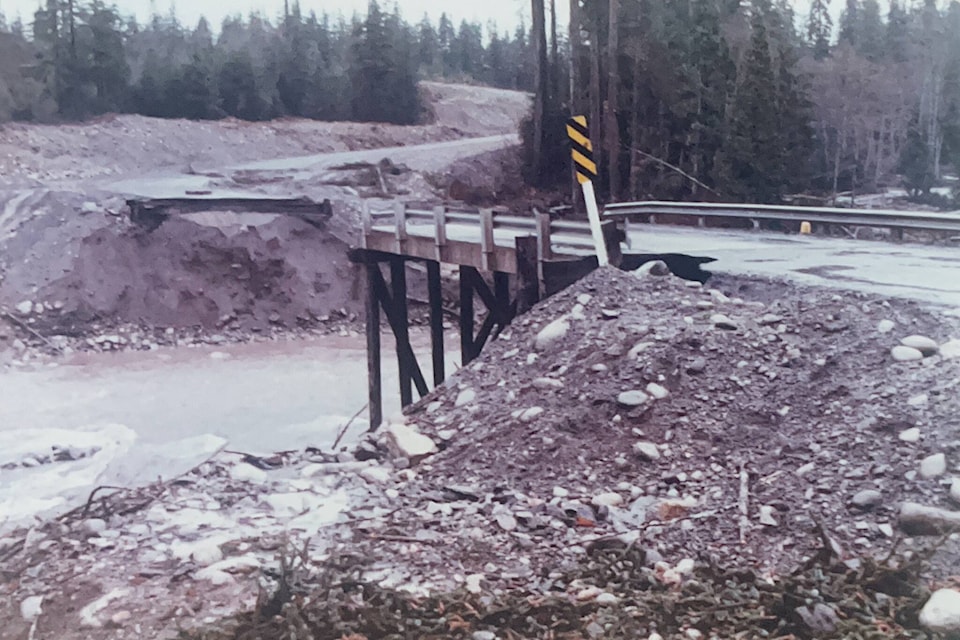Terrace, a northern jewel nestled within the wilderness of British Columbia, finds itself in the grip of an all-too-familiar weather pattern in 2023, reminiscent of the catastrophic year of 1978. In the inaugural edition of “Skeena Stories: The Undocumented Past of Terrace, B.C.,” we embark on a journey back to the fires and floods that reshaped the city and its surroundings in ‘78, rendering Terrace isolated from the outside world as a consequence of the relentless forces of nature.
This year’s spring high water and flooding followed by wildfires is reminiscent of 1978 when the impacts of both were among the worst on record within the region.
In this edition of “Skeena Stories,” we look back on the forces of nature that were unleased.
As the summer of 1978 dawned, the northwest was bathed in sunshine. From the end of May to July, clear blue skies held dominion, showering residents with a warmth and luminosity usually confined to the Okanagan. Rainfall was infrequent visitor, less than one quarter of the annual average.
Unsurprisingly, these arid conditions culminated in an outbreak of wildfires. Lightning triggered 251 fires and more than $6 million was spent fighting them.
As June gave way to August, wildfires raged unabated. Firefighters toiled round the clock. The Nass Valley lost 1,000 acres in mid-June. By early July, five major fires had erupted, consuming 50,000 acres in the region. Fires in the Kitimat Valley and Hazelton — and the significant Cat Fire — charred an additional 36,100 acres.
READ MORE: The Terrace Standard launches ‘Skeena Stories’ series
The lack of rainfall also took a heavy toll on local wells and crops, while across the province, a almost 90,000 acres were lost to the wildfires. Residents yearned for precipitation. But when the skies finally wept, they did so with devastating effect.
In the span of a single week in early November, the heavens unloaded 305 millimetres of rain. What began as an unassuming drizzle on Monday, October 30, quickly escalated. Power outages proliferated, road surfaces began to crumble under the weight of water, and streams turned into raging torrents.
Highway 16 between Smithers and Terrace, was the first to succumb, washing out portions completely. As the days wore on, the situation deteriorated and by Thursday, portions of roadways were collapsing, homes were being swept away, and two lives were lost in a railway accident.
Friday, November 3, brought no respite. The rain continued unabated, and the region was now grappling with a broken natural gas pipeline.
Power outages in Laxgalts’ap [Greenville] in the Nass Valley led to the loss of winter food supplies, and many roads remained closed due to the persistent floodwaters.
Even within Terrace, there were concerns that the torrential rains would trigger a landslide on Lanfear Hill, threatening to wash away more of the city’s roads. Despite the chaos, the clean-up operation had begun by Friday, Nov. 3 and both Terrace and Kitimat were declared disaster areas by the provincial government.
It was not until Remembrance Day, Saturday, November 11, that roads finally reopened. The damage wrought by the fire and flood of 1978 was estimated at around $80 million. A mere 11 days of fury from Mother Nature resulted in a legacy that the residents of Terrace would remember.
Special thanks to Peter Sterner and Grant Watson for their invaluable contributions to this story.
Editor’s Note: An image included in the story indicated the incorrect name of a location. It is Oli’s Place, not Oly’s Place.
Viktor Elias joined the Terrace Standard in April 2023.
Tips or story ideas? (250) 638-7283 ext. 5411 or viktor.elias@terracestandard.com.
Like the Terrace Standard on Facebook and follow us on Twitter.
